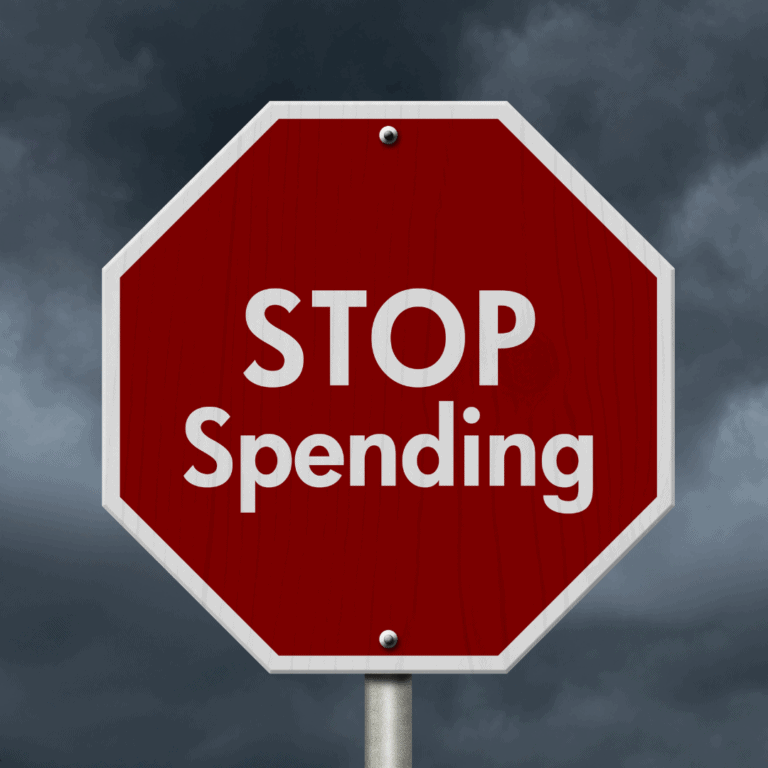Value Based Spending & Changing your Money Mindset
Personal finances and especially the finances of your family are personal to each individual family. We tend to make a lot of financial decisions based on what other people are doing financially and try to mimic those ideas into our own money spending and savings.
Value Based Spending takes into account how your family values the money and the time that you are spending. It is very specific to your values and what you feel is truly important. Value Based Spending can help curb over spending and help you focus on your true financial goals.
What is Value Based Spending?
At the most basic level, Value Based Spending is assigning value to your spending and ensuring that you only spend money on what you value. That seems pretty vague right? That’s because each family will have different values and spending habits.
One of the easiest ways to implement Value Based Spending is to look at your family’s variable spending every month. For example, let’s look at eating out at restaurants and fast food. According to a survey, Americans that eat out, tend to eat out 2-3 times a week.
In 2015 another survey said that the average American household spend $3000 a year in eating away from home. That is an average spending of $250 a month.

For this example, let’s say that you make $20 an hour at your job. If you take $250 and divide it by $20, that means that on average you work 12.5 hours a month just to cover your spending on eating out every month.
The average person in the US works 34.7 hours a week according to recent statistics, so that means about 139 hours a month. Those 12.5 hours you work to cover eating out totals 9% of your total hours worked every month.
These numbers are very eye opening. Dedicating 12.5 of work every month at a job that you might not even like, just so you can eat out at a restaurant or fast food every month, just seems crazy to me!
Now maybe, you eat out as a family a lot due to a busy schedule of sport practices and extra-curricular activities, then in that case it may be worth the work you have to do to afford it. Or you may realize that if you were to meal plan and prepare ahead of time for busy nights, you could eat at home and put those hours worked and money to use elsewhere.
Every family values their time and their money differently. What works for you, may not work for someone else.
When you correlate the amount of time it takes to make the money you are spending, you can decide if that time is worth the spending.
Another Example of Value Based Spending
Have you ever heard that buying a house is the adult thing to do? This advice has been passed down for decades as a way to help young adults focus their money on their future.
Buying a house is not always the best financial decisions for every family. This is a huge investment of time and money, and should not be done just because it is a common thing to do in adulthood.
We make so many decisions about our spending and saving based on other people’s values and not the values of our own family.
Recently, I spoke with a family that goes on vacation 2 times a year every year for the last 10 years. The Mom told me that planning & preparing for the trip, during the vacation, and the unpacking from the trip is just exhausting and overwhelming. She actually thought that she was just a bad vacationer and that she wasn’t doing it right.

I asked her, “then why do you go on vacation twice a year every year? If you are not enjoying it, why do you continue to do it?” She was speechless because she had been planning vacations and going on them every year because it is something her family did when she was growing up and she felt that it was just what families do. She had never thought of not doing it.
If you have every travelled with toddlers, you know that vacationing with small children is truly just exhausting. Trying to keep them on their schedule, finding activities suitable for their age, and finding time for parents to relax is just difficult. Some can do it well, but the rest of us are just not good at this skill.
Unfortunately, this family didn’t always save up for these vacations and a lot of times they were put on credit cards. Not only was this mom not enjoying these vacations, but she was also going into debt every year to finance them.
When she started looking at what they valued and how they spent their time, the family decided to change how they spent their money. Instead of going on vacations twice a year, they decided to go on one vacation every other year. They would choose the destination as a family and make it a good one, instead of just trying to get the best bang for their vacation bucks.
This shift in mindset allowed them to save up money for the vacation so it was debt free, and also allowed them to use their time doing more things locally that were less expensive and less exhausting.
Value Based Spending is not giving up what you love, it is giving up what you don’t really value. If your family loves to vacation and values those trips, then it is fine to spend money on vacations if you can afford it.
Most of the times, we are not actually giving up and sacrificing anything with Value Based Spending. We are just prioritizing how we spend our time and money based on our own family values.
Value Based Budgeting
Once we go through our finances and determine what is important and what is not a priority, we can build a Value Based Budget. A budget is not set in stone, and you can change your budget at any time when your priorities change.
Now your fixed monthly bills are not likely to change in a Value Based Budget, unless you make some lifestyle changes. This could be moving to a lower cost home, trading in an expensive car for something with no payment or a lower payment, or just cutting out monthly expenses like subscriptions or services.
The true impact of a Value Based Budget is working with your variable expenses and also your savings or sinking funds. Once you know what is most important to your family, then you can save towards specific goals for your family.
Just because everyone else is saving up $2000 for Christmas, has 3 separate vacation funds, and paying for 12 different extra-curricular activities every month, doesn’t mean those are good goals for your family.
Another example of spending that is considered normal is birthday parties. Society has shifted in the last decade to make 1st birthday parties and every birthday party after to be a huge deal. We see families spending lots of money on photo shoots and birthday parties that are truly Instagram worthy. Then they go bigger each and every year afterwards. Sometimes spending hundreds and thousands of dollars.

My son just recently turned 5 and that is a pretty big deal being that is now a whole handful of years on the planet. We usually do very low-key birthday celebrations, but we were prepared to do something big this year. My husband and I were estimating spending upwards of $250 for a party for our son and his classmates.
We asked our son where he wanted to go for his birthday, and what he wanted to do. He ultimately decided he wanted to go to the trampoline park and jump till he couldn’t jump anymore. When I asked him if he wanted to invite his whole class to go celebrate his birthday at the trampoline park with him, he said no. WHAT?!?!?! I was not expecting that answer!
My son revealed that he only wanted our family (mom, dad, sister, and him) to go to the trampoline park. He is a very wise soul sometimes, and he told me that he likes going to parties but doesn’t want to have a party. He didn’t want to be the center of attention because it made him nervous.
So instead of a party that would have ended up costing about $350 for the jumping, the cake, the pizza, and party room at the trampoline park for 20 kids, we went as a family and spent less than $50. We figured out that on Tuesdays, you can jump for 2 hours for the price of one hour which was $10. Both kids jumped until they couldn’t feel their legs anymore and had an absolute blast.
Did you know that if we had thrown a party, the total amount of jumping would have only been about one hour? Then the other hour of the party would have been in the party room doing cake and pizza. I thought back to some of the other birthday parties we had attended and almost all of them were great fun for a very small portion of time usually about 45 minutes.
Now before you think that we don’t value my son and that he is not worth $350, we totally would have saved up for and spent that if my son had said that was what he wanted. We had intended to do big birthday celebrations for year 5 and year 10, with smaller family celebrations for the other years. Instead, we spent $50 on a family fun day, and we even spent some money upgrading his bedroom decor to reflect his new Big Boy Status.
We sometimes make decisions for our kids about what they want to do, but we forget to ask them. My husband told me that when he was a kid, he played football for years against his will. His mom assumed that he liked playing football and just kept signing him up. My husband revealed that he desperately wanted to try baseball and soccer as a kid but was afraid to speak up and possibly hurt his mom’s feelings. She was a single mom and worked lots of extra hours to afford him playing football.
Before you spend money on summer camps, sports teams, birthday parties, and vacations, take the time to talk to your kids first. Make it a no pressure conversation and allow your kids to really tell you how they feel about these activities.
Money Mindset Tips
Most of us have an unintended bad or negative money mindset. We tell ourselves that we are horrible with money and that we will never get out of debt. Now the more that you hear something or think of yourself, the more likely you are to continue that same path.
Another way to think about your money mindset, is to remember that financial mindsets can change. You don’t have to beat yourself up over past financial mistakes.
Just because you racked up a lot of debt or chose to spend money on things that are not a priority in the past, you can still change your habits going forward.
A new money mindset may start with acknowledging previous behaviors and making decisions to change those behaviors. If you read my article on “Why Spending feels good”, you may have recognized some signs that you were an over spender. (P.s. there are some great tips to correct overspending in that article too).
Once you have addressed any habits that need changing and start to make more intentional financial decisions, you will eventually have a positive or good money mindset. Being good with money doesn’t mean you have never been bad with money; it just means you are now accounting for your spending and focusing your money on what you want.

Financial Freedom Mindset
Financial Freedom is such a buzz word, and so many people think the concept is amazing but think that they will never achieve it. They don’t make enough money, they have too much debt, they are too old, etc.
Financial Freedom just like personal finances is not the same for everyone. One of my friends recently told me that she feels like she has hit financial freedom because she can buy whatever she wants at the grocery store if she feels like it. It doesn’t mean that she will spend a huge amount of money but knowing that she has enough resources to buy or splurge on certain foods is very rewarding to her.
I am one of those people that used to fear going to the mailbox or answering my home phone. I just knew nothing good was going to come out of doing either of these things. It would be bills I couldn’t pay or collection agencies wanting money I didn’t have.
After getting my finances under control and making better spending choices, I climbed out of my enormous hole of debt. I no longer have any fears about walking to my mailbox. I don’t have a home phone anymore so that one isn’t an issue.
Anyone can shift their financial mindset. If you had asked me 10-15 years ago if I would be debt free except my mortgage, I would have laughed at you. The thought of not having huge amounts of debt was just not even fathomable.
We live a very comfortable life and our family is very happy. We do it on a yearly income of less than $40,000 a year. You do not have to make 6 figures to have financial freedom.
At one point, our family had over $30,000 in debt. You can pay off debt with a low income and get to financial freedom.
My husband and I are in our 40s with too small children. You do not have to be young to get to financial freedom.
Financial Freedom is all about placing value on your time & money, making smart choices, and doing what is best for your family.







